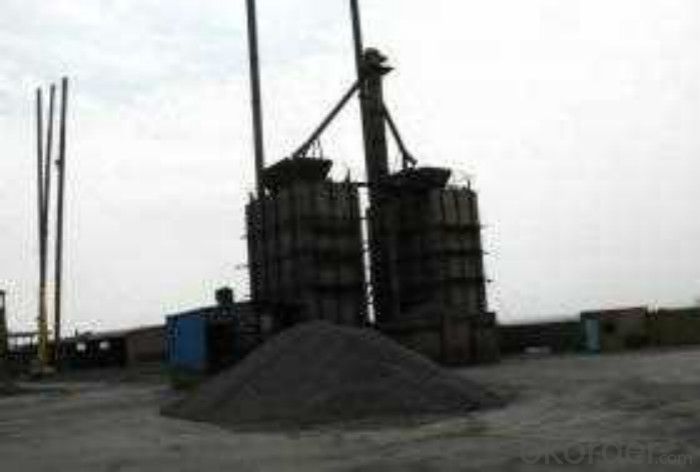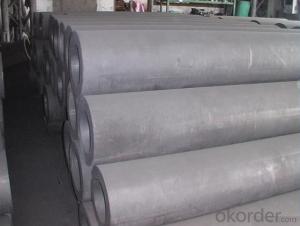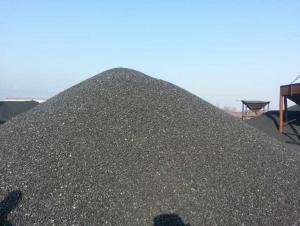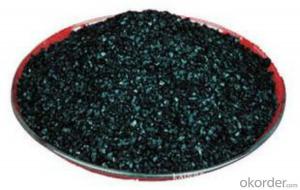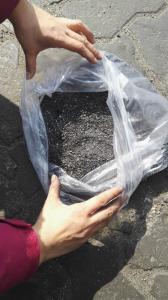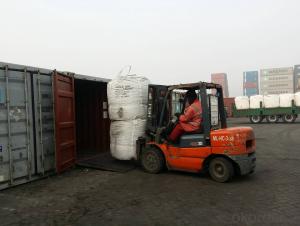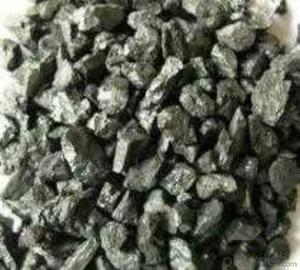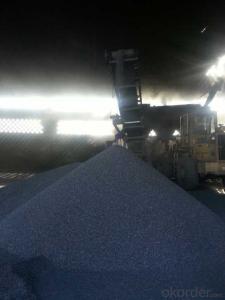FC90% Calcined Anthracite Coal as Injection Coke
- Loading Port:
- Tianjin
- Payment Terms:
- TT OR LC
- Min Order Qty:
- 21 m.t.
- Supply Capability:
- 9500 m.t./month
OKorder Service Pledge
OKorder Financial Service
You Might Also Like
Specification
Introduction
Calcined Petroleum Coke comes from delayed coke which extracted from oil refinery. Although Calcined Petroleum Coke contains a little bit higher level of sulfur and nitrogen than pitch coke, the price advantage still makes it widely used during steel-making and founding as a kind of carbon additive/carburant.
Features
Carbon Additive also called Calcined anthracite Coal, Gas Calcined Anthracite Coal, Carbon Raiser, Recarburizer, injection coke, charging coke and etc. It is playing more and more important role in the industry.
The main raw material of our Carbon Additive is Ningxia unique high quality Taixi anthracite, with characteristic of low ash and low sulfur. Carbon additive has two main usage, fuel and additive. When being used as the carbon additive of steel-smelting, and casting, the fixed carbon may achieve above 95%.
Best quality Taixi anthracite as raw materials through high temperature calcined at 1200-1250 ℃ for 24 hours by the DC electric calciner with results in eliminating the moisture and volatile matter from Anthracite efficiently, improving the density and the electric conductivity and strengthening the mechanical strength and anti-oxidation, It has good characteristics with low ash, low resistivity, low carbon and high density. It is the best material for high quality carbon products, it is used as carbon additive in steel industry or fuel.
Specifications
PARAMETER UNIT GUARANTEE VALUE | |||||
F.C.% | 95MIN | 94MIN | 93MIN | 92MIN | 90MIN |
ASH % | 4MAX | 5MAX | 6MAX | 7MAX | 8MAX |
V.M.% | 1 MAX | 1MAX | 1.5MAX | 1.5MAX | 1.5MAX |
SULFUR % | 0.5MAX | 0.5MAX | 0.5MAX | 0.5MAX | 0.5MAX |
MOISTURE % | 0.5MAX | 0.5MAX | 0.5MAX | 0.5MAX | 0.5MAX |
Pictures
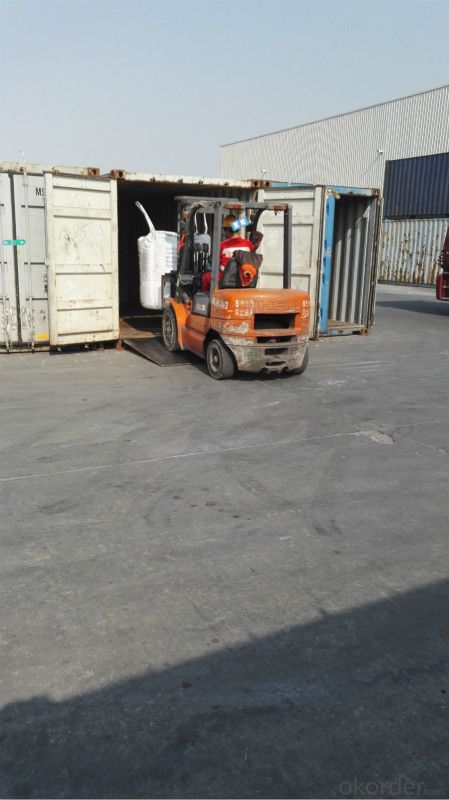

FAQ:
1. What is the packing?
In 25kg bag/ In jumbo bags without pallet/ Two jumbo bags with one pallet/ or as customers’ request
2. What is the production capacity?
10 thousand tons per month
3 What is payment term?
Irrevocable LC at sight/ 20% down payment by T/T and 80% against BL copy byT/T/ or to be discussed
4 What is the service?
We will send sample to the third party(CIQ, CCIC, SGS,BV or to be discussed) for checking, and present the test certificate and loading repot of shipment.
- Q: What is the role of carbon in respiration?
- The role of carbon in respiration cannot be overstated, as it serves as a vital element in organic molecules like glucose. When respiration takes place, glucose undergoes a breakdown with the presence of oxygen, resulting in the production of ATP energy. The carbon atoms found in glucose are oxidized, thereby releasing electrons that eventually transfer to oxygen and form carbon dioxide (CO2) as a byproduct. This entire process, which is referred to as cellular respiration, is universal among all living organisms and is indispensable for generating the energy necessary for various cellular activities. The absence of carbon would render respiration impossible and prevent the generation of energy essential for growth, movement, and other vital life functions. Additionally, the carbon dioxide generated during respiration is released into the atmosphere and plays a critical role in the carbon cycle, which contributes to the regulation of Earth's climate and supports plant growth through photosynthesis.
- Q: What are the health effects of carbon pollution?
- The health impacts of carbon pollution, specifically carbon dioxide (CO2) emissions, are wide-ranging and affect both humans and the environment. The primary concern regarding carbon pollution is its contribution to climate change. Because CO2 is a greenhouse gas, it traps heat in the Earth's atmosphere. This leads to global warming and alters weather patterns. As a result, heatwaves, hurricanes, and other extreme weather events become more frequent and severe. These events have direct and indirect effects on health, including heat-related illnesses, injuries, displacement, and the spread of infectious diseases. Furthermore, carbon pollution is closely connected to air pollution, which has significant health consequences. Burning fossil fuels like coal and oil not only releases CO2 but also toxic air pollutants such as sulfur dioxide, nitrogen oxides, particulate matter, and volatile organic compounds. These pollutants can cause respiratory problems like asthma, bronchitis, and other chronic obstructive pulmonary diseases (COPD). They can also trigger cardiovascular issues, increasing the risk of heart attacks and strokes. The health impacts of carbon pollution are not limited to the respiratory and cardiovascular systems. Increased temperatures and changes in precipitation patterns can also affect water and food supplies. This can lead to waterborne diseases, reduced crop yields, malnutrition, and food insecurity. Moreover, carbon pollution has environmental consequences that further worsen health risks. Deforestation reduces clean air availability and the natural carbon sinks that absorb CO2. Ocean acidification damages marine ecosystems, affecting the availability of fish and other seafood, which are essential sources of nutrition for many communities. To minimize the health effects of carbon pollution, it is crucial to reduce greenhouse gas emissions. This can be achieved by transitioning to cleaner and renewable energy sources, implementing energy-efficient practices, and adopting sustainable land-use and agricultural practices. Additionally, investing in healthcare systems and public health infrastructure to address the direct and indirect health impacts of carbon pollution is essential.
- Q: Power plant water treatment plant, there is a carbon removal device, the expert pointing out what the principle is it?
- The solubility of carbon dioxide gas in water obeys Henry's law, i.e., the solubility of gases in solution is proportional to the partial pressure of the gas on the liquid surface at a given temperature. So only to reduce carbon dioxide gas in contact with the water in the partial pressure of carbon dioxide dissolved in water and free from water will be desorbed, which will remove carbon dioxide free water, carbon remover is the principle of design!
- Q: What are the properties of carbon fibers?
- Carbon fibers are a unique and versatile material with several notable properties. One of their most significant properties is their exceptional strength-to-weight ratio. Carbon fibers are incredibly strong, often surpassing the strength of steel, while also being significantly lighter. This property makes carbon fibers ideal for applications where high strength and low weight are crucial, such as aerospace and automotive industries. Another important property of carbon fibers is their stiffness. They exhibit high stiffness, which means they have minimal deformation under applied loads. This property is beneficial in applications where rigidity and stability are required, such as in the construction of sporting goods like tennis rackets or golf clubs. Carbon fibers also possess excellent chemical resistance. They are highly resistant to chemical corrosion, making them suitable for use in harsh environments where exposure to chemicals or corrosive substances is a concern. This property makes carbon fibers a preferred choice for applications in the chemical industry or offshore structures. Furthermore, carbon fibers have a low thermal expansion coefficient, meaning they do not expand significantly when exposed to heat. This property makes them useful in applications where thermal stability is crucial, such as in the manufacturing of high-temperature components like turbine blades or heat shields. Additionally, carbon fibers exhibit excellent fatigue resistance, allowing them to withstand repeated loading and unloading cycles without significant damage. This property is particularly advantageous in applications subjected to cyclic or dynamic stresses, such as in the construction of sports equipment or aerospace structures. Lastly, carbon fibers have excellent electrical conductivity. They can conduct electricity efficiently, making them suitable for applications where electrical conductivity is required, such as in the aerospace industry for lightning strike protection or in the manufacture of electronic devices. Overall, the properties of carbon fibers, including their high strength-to-weight ratio, stiffness, chemical resistance, low thermal expansion, fatigue resistance, and electrical conductivity, make them a highly desirable and sought-after material in various industries.
- Q: What is carbon fixation in biology?
- Carbon fixation is the process by which carbon dioxide from the atmosphere is converted into organic compounds by plants, algae, and some bacteria. This process is crucial for the production of organic matter and the maintenance of a stable carbon cycle on Earth.
- Q: What are the impacts of carbon emissions on marine life?
- Carbon emissions have significant impacts on marine life. The release of carbon dioxide into the atmosphere leads to ocean acidification, which disrupts the balance of pH levels in the water. This affects the ability of marine organisms to build and maintain their shells or skeletons, particularly in coral reefs and mollusks. Additionally, rising temperatures due to carbon emissions contribute to coral bleaching, leading to the loss of crucial habitats and biodiversity. Furthermore, increased carbon dioxide levels can alter the behavior, reproduction, and growth rates of various marine species, ultimately impacting the entire marine ecosystem.
- Q: What is carbon steel, carbon manganese steel?
- Carbon manganese steel is a high-quality carbon structural steel in the higher manganese content of carbon steel, manganese elements are generally marked in the rear, such as 20Mn, 40Mn and so on
- Q: What are carbon-based superconductors?
- Carbon-based superconductors are materials that exhibit superconductivity, which is the ability to conduct electricity with zero resistance, at relatively high temperatures, using carbon as the main component. These materials have unique properties that make them promising candidates for various technological applications, such as energy storage and transmission systems.
- Q: What are the impacts of carbon emissions on water scarcity?
- Carbon emissions have significant impacts on water scarcity as they contribute to climate change, which alters precipitation patterns and increases the frequency and intensity of droughts. Additionally, carbon emissions from industrial activities and fossil fuel combustion can lead to water pollution, further exacerbating water scarcity by degrading water quality and reducing available resources for human consumption and agriculture.
- Q: How do you use carbon fourteen to measure the age?
- One is obvious a small amount of sample, only 1 ~ 5 mg samples can be, such as a piece of fabric, bone chips, toner trace of ancient ceramics in the surface or pores can be measured; while the conventional carbon - 14 dating rules 1 to 5 grams of samples differ by 3 orders of magnitude. The two is high sensitivity. The sensitivity of 10-15 to 10-16 isotope ratio measurement; while the conventional carbon - 14 dating rules with a difference of 5 to 7 orders of magnitude. Three is a short measurement time, measurement of modern carbon to reach 1% accuracy, only 10 to 20 minutes; while the conventional carbon - 14 dating is 12 ~ 20 hours. It is due to carbon - 14 accelerator mass spectrometry dating method has the advantage, since its inception, has been paid attention to by archaeologists, paleontologists and geologists, and is widely used. It can be said that within 50000 years of cultural relics on the determination of samples, carbon - 14 accelerator mass spectrometry dating method is determined the accuracy of a maximum of 1. carbon. 14 is a radioactive isotope of carbon, was found in 1940. It is produced by cosmic rays collide with a nitrogen atom in the air, which has a half-life of about 5730 years, as the decay of beta decay, 14 atoms into carbon nitrogen atoms.
Send your message to us
FC90% Calcined Anthracite Coal as Injection Coke
- Loading Port:
- Tianjin
- Payment Terms:
- TT OR LC
- Min Order Qty:
- 21 m.t.
- Supply Capability:
- 9500 m.t./month
OKorder Service Pledge
OKorder Financial Service
Similar products
Hot products
Hot Searches
Related keywords


